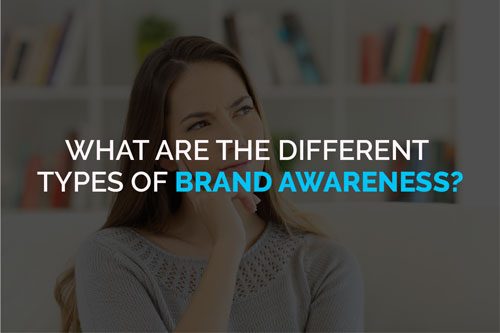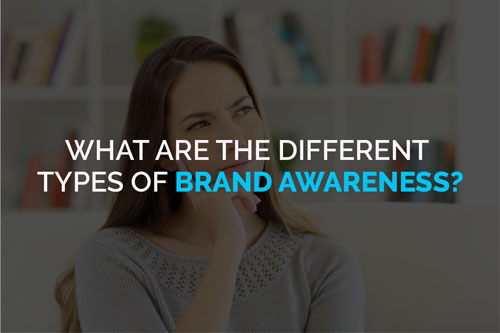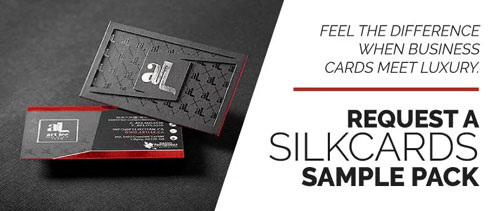
Did you know the average American will interact with 16,000 different brands every day? Having a strong brand that stands out to consumers will allow you to remain on top in even the toughest industries. As a business owner or marketing professional, you are already aware of what brand awareness is and why it’s important. But do you know which branding strategies will work best for you? If you want to grow your business at the top of the consumer awareness funnel, it’s time to find out.
What Are the Different Types of Brand Awareness?
These are the five major types of brand awareness. The sooner you familiarize yourself with them, the sooner you will be able to use them to your company’s advantage.
Brand Recall
When you run out of a product and you buy the same one again, chances are you have brand recall to thank. Brand recall means the customer associates your name with a specific product or service. This is important because ensuring your client base thinks of you before they go to your competitors.
Examples of Brand Recall
One example of brand recall is being asked what you’d feed a puppy and thinking of Purina Puppy Chow first without any prompting.
Brand Recognition
When a consumer is able to recognize your brand through jingles, slogans, or other identifying features besides your name, that’s brand recognition in action. This is also known as aided brand recall, and it’s important because when it happens it means you are successfully reaching your target market.
Examples of Brand Recognition
If you see a swoosh on the side of a pair of running shoes and you instantly know those shoes are made by Nike, that’s brand recognition.
What’s the Difference Between Brand Recall vs. Brand Recognition
The difference between brand recall and brand recognition can be described in terms of marketing research test results. In brand recall, the test would tell you how often consumers are able to remember your brand over those of your competitors. In brand recognition the test would tell you how often they are able to recognize it based upon your logo, packaging, jingle, or other identifying features.
Visual Branding
Visual branding is important because it tells your brand’s story while allowing you to stand apart from competitors in your industry—all without a single written word. This is accomplished through logos, images, design, and other strictly visual means.
Examples of Visual Branding
If you want a vivid example of visual branding, ask your child to point to the nearest McDonald’s. Even a toddler who is too young to read will show you where the golden arches are.
Top of Mind
When you are asked to name a product from a specific category, which one comes to the top of your mind first? When you think of a certain product “off the top of your head,” that is top-of-mind awareness, and it matters because it means you are at the forefront of their awareness.
Examples of Top of Mind
If someone asked you to name a fast car, what would be the first thing that popped into your mind? If you thought of a Porsche or similar car first, you would say the brand was at the top of your mind.
Brand Dominance
Strong brand dominance is evident when consumers can only recall the name of a single brand in an industry. Being dominant means staying at the top of your industry, and this position is worth the fight to continually keep your client base engaged.
Examples of Brand Dominance
Aspirin is an example of brand dominance gone overboard. At one point it was a brand name, but today when we think of aspirin we most likely think of Bayer or another brand instead.
Tips on Crafting a Brand Strategy with These in Mind
- Know your market
- Know your competition
- Reward customer loyalty
- Be flexible yet consistent
- Tap into your customers’ emotions
- Make a promise to the consumer and keep it
The next step in your journey toward creating a strong and memorable brand experience is to develop your ideas and to clearly outline your strategy. You’ll want to consider every last detail, from your colors, your logo, and your tagline to your web design and your social media presence. Branding is as much about who your clients are as it is about who you are, so there is no such thing as too much research. And last but not least, keep in mind that your brand is not going to be set in stone. This is an ever-evolving process, and the companies that stay on top are going to be those who are savvy enough to continue growing and changing.


